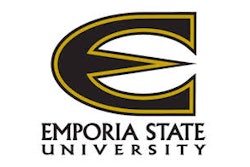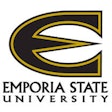With Tens of Thousands of Potential Funding Sources to Choose From, Organizations Need to Put In Place a Systematic Strategy That Focuses on All Phases of the Grant-Writing Process

In the current economic climate, it's clear that many educational, health and human-service organizations are struggling to make ends meet. At the same time, there is more grant money available than ever before: Studies indicate that in 2002, more than $450 billion in grant money will be awarded by some 56,000 foundations, 5,000 corporations and thousands of government programs. Undoubtedly, school districts, universities and both for-profit and nonprofit entities could deliver higher quality services if they knew where to look for the money - and how to get it.
Those of us in the grant-writing business have observed both this pronounced expansion in the number of grants available and a profound shift in the expectations of funding organizations. Many of these funding agencies have downsized their application procedures, and thus require shorter grant proposals. On the plus side, applying for grants is significantly less complicated than it used to be. On the minus side, many foundations now accept only a one-page proposal, leaving organizations with less room to make the case for themselves as recipients.
Under these circumstances, it pays to think outside the box. For example, few would think "airline company" when seeking sports-related funding, but that's what one enterprising organization did to snag a $5,000 grant from the Delta Airlines Foundation to help establish a recreation program. Consider smaller grants that might fund a portion of your program - several of these can add up to give you the support you need.
Also, an emerging preference among funding sources is to grant funds to collaborative efforts. While your agency may not be eligible to apply for a specific grant, you can subcontract with another organization to provide services, netting a portion of the funds for your agency.
Successful grant writers know that money must be invested up front to compile the resources needed to find grants. Here are five recommended avenues to develop a resource library:
1. Obtain grant directories that pinpoint the best grant programs or the "cream of the crop" in funding sources. These grant directories can be highly specialized publications (such as funding for the arts) or can have a broader focus (such as the largest national foundations that fund a wide variety of programs). Most large libraries carry grant directories, but many are voluminous and outdated. Look for private companies that update their directories annually for the latest information about funds.
2. Subscribe to a monthly grants newsletter that provides up-to-date information about existing and new grant programs. Go to an Internet search engine and type in "grants newsletter" for a variety of publications.
3. Take advantage of the power of the Internet. This venue is a tremendous asset for the technologically advanced grant writer. Most funding sources' web sites provide detailed information about their grant programs and explain the application process.
4. Obtain the grant-development training you need by attending grant seminars and conferences that offer certification in the field. Find one that gives you hands-on, practical lessons, and be sure to ask for references when assessing a firm's training.
5. Let everyone in your community know that you are a grant writer interested in collaboration with other agencies. Since grant programs are announced in countless ways, contact with professionals in other disciplines is every writer's best asset.
Certain types of grant programs require very specific approaches. For this reason, the most successful grant-development programs build a diversified resource-development strategy, seeking grants from several sources, never relying on any one type.
• Federal Government Grant Programs. Federal grants are the most complex, competitive and lengthy, but they typically offer larger awards and fund for multiple years. More recently, federal officials have actually reduced the administrative burden (the "strings") traditionally attached to these grants. Federal grants are found in the Federal Register, which is published daily. Although subscription costs are $450 annually, the Federal Register is available at no charge via the Internet at www.access.gpo.gov/ su_docs/aces/aces140.html, and hard copies are located in large libraries. (Search for "grants availability.")
Most federal grants are announced early in the federal fiscal year, between Oct. 1 and Dec. 31. The law requires that federal agencies announce their programs for public input prior to the official notification of grant availability. By identifying grants in the fall or early winter, grant seekers will have several months to prepare for the grant-writing process - much better than the standard 60 days when the grant is formally announced in late winter or early spring.
• State Government Grant Funds. State government grants are easier to write than their federal counterparts, but typically distribute smaller awards for one-year funding. State government grants are spread among many agencies and can be difficult to locate, since most states do not have a central grants-announcement mechanism.
The key to finding these grants is to obtain a copy of your state government telephone directory (available from larger magazine stores), or use an Internet search engine. From there, simply type in a specific state agency or your state's name to link to relevant government agencies. Next, contact a mid-level manager in an appropriate division of each appropriate state agency to inquire about the availability of grants. Typically, a state will run about 60 different grant programs.
• City and County Government Grants. Local governments receive monies through federal and state government block grants (such as the Community Development Block Grant Program) and from local taxes. These grants are based upon needs identified through public hearings and are coordinated through the economic and planning divisions within city and county governments. While often politically sensitive, local grants fund a wide variety of programs. These grants are typically smaller than federal and state government programs and are usually allocated on an annual basis.
• Foundation Monies. Foundations are generally interested in the well-being of communities. Many therefore seek projects that test new strategies and disseminate information to other community organizations, so that others may benefit from one group's experience with a grant.
Requirements for foundation grants vary, but most require a limited amount of information. Many, such as the Kellogg Foundation (with its $3 billion in assets), now accept applications online. Other foundations, such as the Ford Foundation ($2 billion), allocate thousands of grants each year and respond to proposals in 30 days or less. You can learn about foundations through grant directories or in the reference section of large libraries. Internet search engines also yield lots of information on "foundation grants."
• Corporate Grants. Thousands of corporations allocate grants, with the average funding level around $50,000. But corporations have a different focus: They are interested in promoting their products, increasing profits, assisting employees and their families, creating public awareness and enhancing tax write-offs. Consequently, when you write a corporate grant proposal, you must focus not only on your needs, but also on how your project will promote or help the corporation.
Most large companies have both a corporate giving program and a national foundation. For example, the BellSouth Corporation provides grants through corporate giving and also has the BellSouth Foundation that focuses on education and technology. You should obtain a corporate foundation directory and also visit your local Chamber of Commerce for a listing of Fortune 500 businesses in your community. Chances are your corporate neighbor also has a national foundation that distributes millions of dollars annually.
Knowing where to find grants is only one small step in the grant-development process. Vital to the success of grant-writing efforts is an organized strategy that focuses on all phases - finding, applying for, obtaining and implementing grants.
The following guidelines address the problems and barriers that prevent most organizations from obtaining grants, and offer suggestions on how to provide the support that grant writers and teams need to be successful:
• Select one person within the organization to serve as a "grant seeker." Most organizations fail to see the value of investing in the resources that are necessary for successful grant development. Identify someone as a grant seeker and help this person gain a full understanding of the grant process by enrolling him or her in formal training. This person should be allocated a $1,000 budget to establish a library of grant directories and newsletters. Even a modest grant library will help to identify appropriate resources. In addition, develop an incentive program that will reward the grant seeker for identifying funding sources.
• Establish a clear vision of what is needed. Too often, grant writers are forced to work from a "wish list of things to buy" rather than having the big picture laid out for them. Funding sources want to know why requested monies and items are needed, and how they can benefit the organization's stakeholders.
Conduct a needs assessment among the various professionals in your organization and for the targeted population you serve. For example, coaches who want to apply for a technology grant to integrate digital camera technology to record practices will have significantly different needs than 12th-grade technology instructors who are training students on the use of Microsoft PowerPoint. Assessing needs through staff input builds a bridge and a sense of ownership between the grant writer or team and the professionals who will implement the grant program. A written needs assessment will concisely outline organizational needs and provide a road map for the grant seeker in finding appropriate grants.
• Develop grant-writing teams within the organization. In most organizations, grant writing occurs in isolation. Most grant writers prefer to work alone and resist teamwork. As a result, there is no coordinated effort to encourage everyone to work together toward a common vision. Once the organizational needs assessment has been completed, seek professionals and volunteers who desire to work on a grant-writing team. Individual involvement can range from reviewing drafts to actually writing sections of grant proposals. You'll want to identify people with skills in writing, program development, word processing, research, the Internet and budgeting. These teams need support and training to do their job successfully and are an excellent investment, since they can develop more grants as a group and bring in significantly more funds than individual grant writers.
• Create simple, written guidelines on how a grant proposal proceeds through the organization. Develop procedures that define how grants are identified, developed, reviewed and approved by the organization. Assemble a decision-making committee that has the authority to expeditiously approve the development of a grant proposal. If possible, avoid bureaucratic barriers such as requiring the board of education, city council or board of directors to approve grant proposals. Also, designate one trained person to coordinate the grant-development process for the organization. This person should not be a bureaucratic roadblock but a facilitator to guide the grant writer and other team members.
• Establish incentives as part of the grant-development process. Too often, school districts, nonprofits and government agencies do not apply the same business principles used by their for-profit counterparts to reward employees. People work harder and operate at higher levels of efficiency if they are rewarded and recognized for their success. Just as for-profit companies provide bonuses and incentives to individuals for outstanding work and for projects that bring in financial resources, nonprofit and government organizations must consider similar incentives to enhance grant-team success.
Incentives can include public recognition, cash bonuses, extra vacation time, travel to national conferences, higher salaries and updated equipment. For example, one school district rewards educators with a 5 percent cash bonus from local funds for any grant they bring into the district. Organizations that employ full-time grant writers who focus on grant development are the most successful. These positions nearly always pay for themselves after two years.
• Involve outside agencies. Other nonprofit agencies and businesses, faith-based organizations, schools and school districts, universities, government agencies and community groups should be invited to work with your organization in identifying and applying for grants. Ideally, your agency may wish to create an interagency grant-writing team, in which members from each agency collaborate to write and share the funds that are collected.
Since grant notices are distributed to a wide range of organizations, these alliances will increase funding opportunities, by allowing one organization to piggyback on a grant that is only eligible to another organization. Establish a philosophy of sharing grant monies rather than going after grants alone. When there is collaboration, grant writing is certain to be more successful.
It's apparent that in the race for grant monies, some organizations receive millions of dollars, while others - often with greater financial needs - receive little, if any. What is limiting the success of these organizations? While many organizations may tell their employees and volunteers that grant development and fund-raising are very important, they fail to develop a system that supports and rewards grant writers.
It cannot be overstated how important it is to create a process within your organization before sitting down to write a grant proposal. A coordinated grant-writing process will reduce frustration, encourage collaboration, increase the number of grants funded and pave the way for many new programs that otherwise could not be implemented.




































